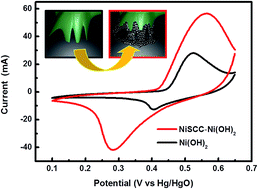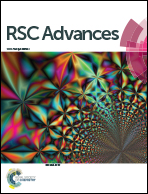A one-step practical strategy to enhance overall supercapacitor performance†
Abstract
We introduce a straightforward strategy to simultaneously improve the capacitance, rate capability, and cycle life of a supercapacitor by simply electrodepositing Ni-nanoparticles (Ni-NPs) on an as-prepared electrode. 3D-structured current collectors such as metal foams, metal meshes, and carbon meshes have been widely used in supercapacitors, secondary batteries, glucose sensors, etc. In particular, the 3D-metal foam readily improves device properties due to its unique 3D-nature and high surface area. However, there are practical constraints when applying 3D-current collectors to the industrial world, including high cost. Here, by simply electrodepositing Ni-NPs in a cost-efficient manner, a similar effect to that derived with the use of 3D-metal foam was realized. After deposition, Ni-NPs are preferentially located near the contact area between the active materials and a plate-type current collector, which allows for tight binding between the active materials and the current collector as well as facile charge transfer and high capacitance. The Ni-deposited Ni(OH)2 electrode pasted on a plate metal substrate showed 350% increased capacitance (1264 F g−1) and stability of 75% and 72% after 10 000 cycles and at a high current density of 20 A g−1, respectively. Given the simplicity and cost-efficiency of this method, it can be readily applied to other energy storage devices with practical applications in the industrial world.


 Please wait while we load your content...
Please wait while we load your content...